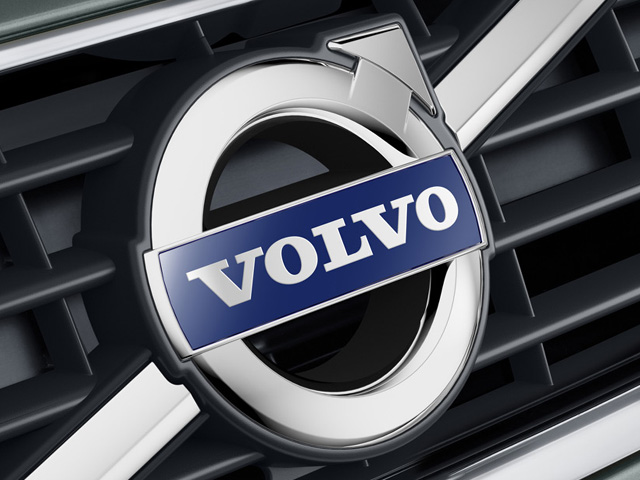For many people, Looks,features,Fuel efficiency has always been the first criteria for buying a new car.But do you know that the safety of the car is also extremely important. It is no secret that the Volvo Cars has always been a leader in the field of car safety and this safety assurance is hidden in the logo of Volvo Cars.

The Volvo symbol is an ancient chemistry sign for iron The iron sign is used to symbolize the strength of iron used in the car as Sweden is known for its quality iron.
The diagonal line (a strip of metal) across the grille came about to hold the actual symbol, a circle with an arrow, in front of the radiator.

Volvo cars have long been marketed as safe and the company has stressed their historic reputation for solidity and reliability in marketing campaigns. It uses high-tech safety systems as standard equipment in new vehicles.
The Remarkable history of Volvo and Safety.
Throughout its long history, the Volvo company has led the charge in creating many safety features which are now mandated on all new vehicles.

- 1959 – Three-point Safety Belt :
The three point safety belt was invented by Volvo engineer Nils Bohlin – he introduced three-point seatbelts into the series production PV544. After he introduced the 3-point safety belt, he faced a world of criticism. Since then, it has saved more than a million lives.
- 1972 – Rearward-facing Child Safety Seat

Remember those early images of astronauts lying on their backs during take-off to even out the forces? Well, that was the basic principle behind our rearward-facing child seats, to spread the load and minimise injury. Then volvo innovated in 1976 with the child booster seat and again in 1990 with an integrated booster built right into the seat.
- 1991 – Side Impact Protection

Another major step forward for safety came with volvo’s Side Impact Protection System, or SIPS. This was an integral part of the car’s design and included a very strong structure and energy-absorbing materials on the inside, a cross member in the floor and even reinforced seats.
- 1998 – Inflatable Curtain

The inflatable curtain was yet another leap forward in safety for Volvo Cars. It’s concealed in the headliner and runs from the front to the rear of the cabin – in the event of a side impact, the curtain inflates in just 25 thousandths of a second and can absorb 75% of the energy generated when the head is thrown sideways.
- 2002 – Roll-Over Protection System (ROPS)

With the growing popularity of SUVs, Volvo reckoned it was time to introduce the next safety innovation – rollover protection. Firstly, Volvo enhanced their SUVs’ stability with a sophisticated electronic Roll Stability Control system and secondly, it improved the car’s safety structure with extremely tough boron steel in the roof.
- 2003 – Blind Spot Information System (BLIS)

The BLIS system uses cameras and radar to watch for vehicles alongside and offset to the rear of the Volvo. When a car enters the blind spot area, a warning lamp comes on near the door mirror, giving the driver ample time to react.
- 2008 – City Safety

The City Safety system uses laser detection to work out whether a collision with the car in front is likely, and if the driver doesn’t brake, the car will do it. And the system works up to 50km/h.
- 2010 – Pedestrian Detection with Full Auto Brake

This system works by using radar and cameras – that warns a driver if somebody steps out in front of the car, and then brakes automatically if the driver fails to.
- 2014 – Run-off Road Protection

Volvo was again the pioneer testing road departure crashes – often the result of fatigue, poor weather conditions or a lack of driver’s attention. It focused on keeping occupants firmly in position, introducing unique ‘energy-absorbing’ functionalities in the seats that can mitigate spine injuries.
- 2016 – Connected Safety

Volvo Cars is defining a completely new type of road safety system in a world of connected cars.The Slippery Road Alert and Hazard Light Alert – use the cloud to share critical data between vehicles, alerting the driver about slippery road sections or vehicles that have activated their hazard lights – providing the driver with enough time to slow down.
Volvo Innovation Today
Currently, there are a great many automotive publications that consider Volvo models the “safest cars in the world.”

Moreover you research many of the top new Volvo models you will notice that many enjoy high marks from a variety of new car assessment programs including Top Safety Pick status by the Insurance Institute for Highway Safety (IIHS) as well as full five-star ratings by the National Highway Traffic Safety Administration (NHTSA).

Likewise, most brand-new Volvo models, carry full five-star ratings by the European New Car Assessment Program (Euro-NCAP), one of the leading sources for safety ratings across the world.

